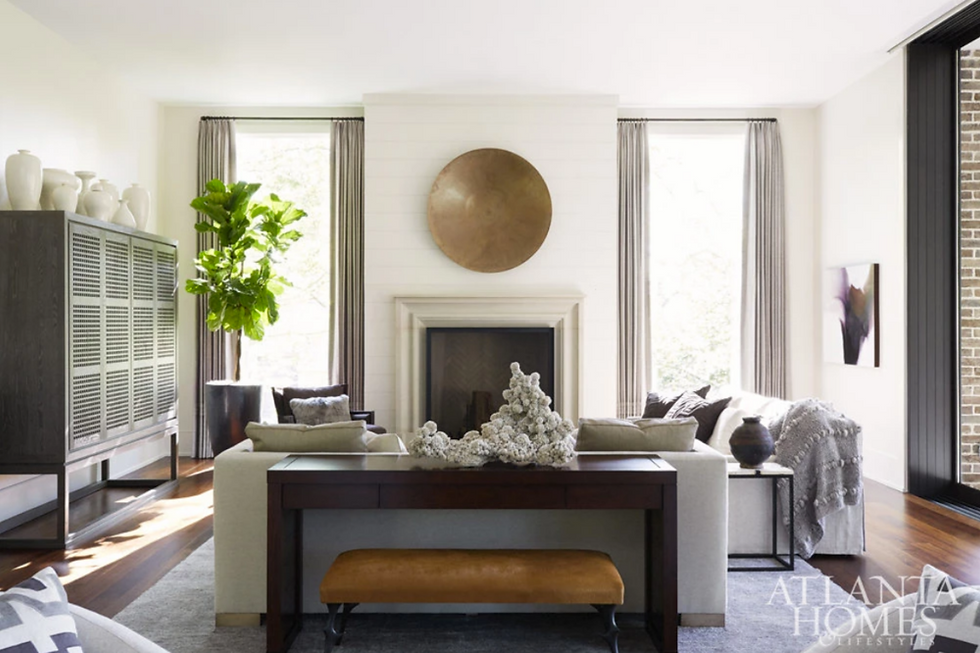How to Pick the Perfect Wall Color
- goodromanmarketing
- Aug 25, 2022
- 4 min read

For home owners (especially new home owners), choosing the perfect paint color for your walls is an important step! Although we sometimes do not give color enough credit or thought, color can drastically change our mood and sometimes dictate our environment. Color psychology is used by marketing and branding professionals every day to help the evoke a specific emotion from the consumer and to help to create a feeling association with their brand. For example, Chick-fil-a uses red as its primary branding color. Red is commonly used in reference to food (Wendy's, McDonald's, Arby's, ect) and can create an energetic or hurried feeling from its consumers. It's not coincidence that their M.O. is to get you in and out as quickly as possible so that they can serve as many people as possible. It's literally one of the reasons we can call it fast food. Choosing the wrong color could even have very negative effects on selling your home. So, instead of just standing at the paint sample counter at your local paint store, waiting for the right color to inspire you, here are some questions that you should ask yourself before you paint: What is the room used for? Color psychology definitely comes in to play here. Colors in the red family often evoke excitement, energy or hunger. This is why we see so many food brands that incorporate this color. For this reason, it is common practice for designers to stay away from these kinds of colors when picking out a bedroom color for instance. The primary function of a bedroom is relaxation and slumber, so choosing a charged color like red will not help evoke this type of mood. When choosing a paint color or color family for your room, ask yourself: What is this room used for? What kinds of activities will be performed this room? This question should greatly influence your decision. If you have a difficult time answering this question or have no idea where to start, when in doubt, you will never go wrong with NEUTRAL colors. Neutral colors are also good to use if you are going to sell your home. They make spaces feel bigger and the color psychology will suggest a "clean slate" for the purchaser. For more on color psychology, click HERE for a helpful link. Does this color help the flow of my home? Try to refrain from choosing a #color that does not match the color family or flow of your home. Choosing colors for rooms that are adjacent to one another that are at different ends of the color wheel (like red and green) could make your home feel disjointed and choppy. Likewise, if you paint every room in your house a different color, you will find that your home will start to feel smaller. A good rule of thumb is to try to find a color or color family that will flow through the major common areas of your home.

Are there pieces of upholstered furniture that I already have and need to use?
There's nothing worse than choosing a color for a room that won't go with what you already need to use. Making that mistake could cost you in other fees to recover or purchase a new piece of furniture. Take the pain out of that situation early and choose a color that will complement what you know you must use in your home.
How much light does your room get?
This is probably the most important question. Ask any designer, light can make or break a room. The darker the wall color, the more light you will need. Natural light is always the best light. Gray walls or colors with a gray undertone will look much darker in rooms without much natural light. When in the paint store, always take the paint sample outside in the sunlight, away from the pinkish florescent lights of the store. It is only then that you will be able to distinguish the true color of the paint sample. Take the paint sample into the room you wish to paint and put it on each wall to see how light will play on that the color. You would be shocked when you start looking at paint colors in a store and then put them in a different room. They can look completely different!

There are so many naturals, whites, and beige's! Which one do I choose?
This can be a daunting task! For someone that wants to choose a white or neutral for their home, walking into a paint store and discovering that there are seemingly hundreds of whites, neutrals, and beige's to choose from can be overwhelming. Believe it or not, even whites have color under tones. There are whites that cast red hue, blue hue, yellow hue, ect. You should think color psychology here as well also. To some, a white that has a gray cast can be calming. To others, a white that has a gray cast can be depressing.

Here's a little cheat sheet to take away from this post:
1. Choose color and color families that reflect how you want you want to feel in the room.
2. Don't choose too many colors for your house. Focus on a color or two for common areas to help the over-all flow of your house.
3. If you already have your favorite furniture pieces, choose a color for your walls that will complement what you have.
4. Be "light" minded about your room. Always keeping in mind how much light your room will get, choose lighter or darker colors appropriately.
5. Always take paint samples home to your house and put them on the walls that you want to paint to see how the light will effect them.




Comments